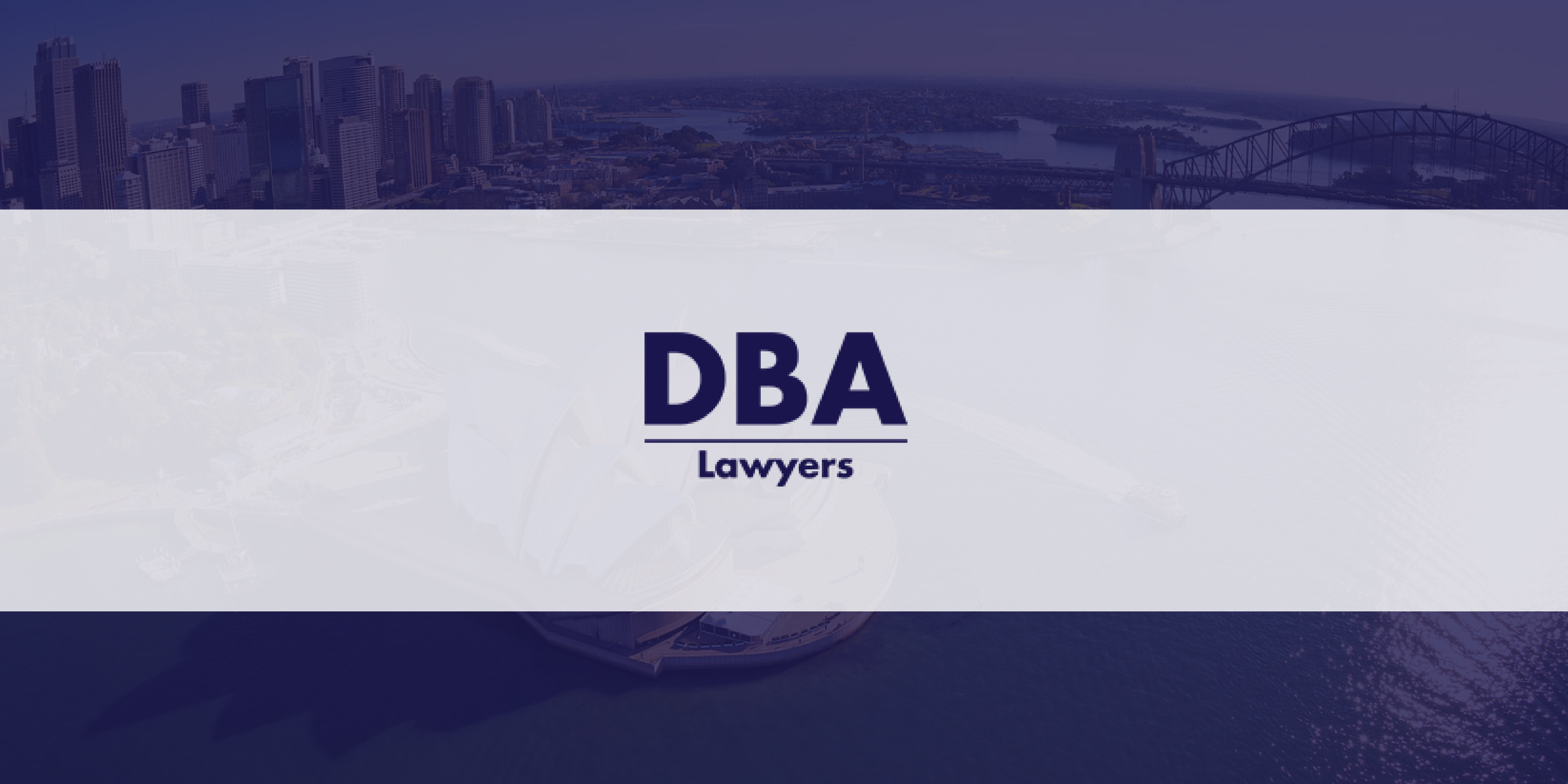
Article by Joseph Cheung, Lawyer and Daniel Butler, Director, DBA Lawyers
Under certain circumstances, an individual member’s total superannuation balance (‘TSB’) will be increased by their share of the outstanding balance of a limited recourse borrowing arrangement (‘LRBA’) that commenced on or after 1 July 2018 when the Treasury Laws Amendment (2018 Superannuation Measures No. 1) Bill 2018 (‘Bill’) becomes law.
In Part 1 of our series, we considered how the proposed law applies to members who have satisfied a relevant condition of release with a nil cashing restriction. In Part 2 of our series, we examine how the proposed law applies to members whose superannuation interests are supported by assets that are subject to an LRBA between the superannuation fund and its associate (often referred to as a ‘related party’ in everyday conversation).
For completeness, we note that the proposed law applies to both members of self managed superannuation funds (‘SMSFs’) and other funds with fewer than five members. For the purpose of this article series, we will focus on its application to SMSFs.
Lender is an associate of the superannuation fund
Many advisers and commentators have commented that the effect of the proposed law is that a member’s TSB may be increased if their superannuation interests are supported by an LRBA that involves a ‘related party’ lender. In broad terms, a liability is treated as an asset for a member’s TSB purposes. On a more technical level, the wording in the Bill refers to the term ‘associate’, which is a term defined in the Income Tax Assessment Act 1936 (Cth) (‘ITAA 1936’). In contrast, the term ‘related party’ in the superannuation law context is a term defined in the Superannuation Industry (Supervision) Act 1993 (Cth). The definitions are not identical, although there is significant overlap and similarity. Therefore, to thoroughly consider whether the proposed law has any effect on a member’s TSB, SMSF trustees and advisers need to assess whether the lender or proposed lender is an associate of the SMSF.
We illustrate the effect of the proposed law with an example.
EXAMPLE 1
Edward and Ellen are the only members of their SMSF. The value of Edward’s superannuation interests in the SMSF is $1.2 million. The value of Ellen’s superannuation interests is $800,000. The assets of the SMSF comprise of cash only.
Edward is 52 years old. Ellen is 43 years old.
The SMSF acquires a $3 million property. The SMSF purchases the property using all of its cash (ie, $2 million) and borrows an additional $1 million from E&E Pty Ltd, which is a company controlled by Edward and Ellen. Hence, E&E Pty Ltd is an associate of their SMSF.
The SMSF now holds an asset worth $3 million (being the property). The SMSF also has a liability of $1 million under the LRBA.
Of its own cash that it used, 60% ($1.2 million) was supporting Edward’s superannuation interests and the other 40% ($800,000) was supporting Ellen’s interests. These percentages also reflect the extent to which the asset supports Edward and Ellen’s superannuation interests.
Edward’s TSB is $1.8 million. This is comprised of the 60% share of the net value of the property (being $1.2 million) and the 60% share of the outstanding balance of the LRBA (being $600,000).
Ellen’s TSB is $1.2 million. This is comprised of the 40% share of the net value of the property (being $800,000) and the 40% share of the outstanding balance of the LRBA (being $400,000).
The following are some key points to note from the above example.
- An increase in the member’s TSB as a result of their share of the outstanding balance of an LRBA can create liquidity issues for the SMSF. Considering the above example, if Edward’s TSB just before 1 July 2019 is $1.8 million (ie, greater than $1.6 million), this would prevent him from making any non-concessional contributions (‘NCCs’) without an excess in the financial year ending 30 June 2020. This may affect the SMSF’s ability to repay the LRBA and fund pension payments and ongoing expenses.
- An increase in the member’s TSB can also affect other superannuation rights and obligations. (For more information about the various superannuation rights and obligations that depend on a member’s TSB, please refer to the following link: https://www.dbalawyers.com.au/contributions/total-superannuation-balance-milestones/.)
Practical application
LRBAs commenced pre-1 July 2018
The proposed law does not apply to:
- LRBAs that commenced before 1 July 2018; and
- the refinancing of the outstanding balance of an LRBA that commenced before 1 July 2018.
For these circumstances, a member’s TSB is unaffected by the proposed law.
LRBAs commencing on or after 1 July 2018
An SMSF trustee that is considering acquiring an asset via an LRBA should consider the following questions:
- Is the proposed lender an associate of the SMSF?
- If so, what is the potential effect of the proposed law on each member’s TSB?
- Are there are any flow-on consequences, such as the member’s ability to make NCCs, which could affect the SMSF’s ability to repay the LRBA?
Careful planning, analysis and cash flow projections may be necessary before an SMSF trustee can make an informed decision about whether to enter into an LRBA.
The above questions also apply for any SMSF that has commenced an LRBA on or after 1 July 2018. If the lender is an associate of the SMSF and the member’s TSB is affected, the SMSF trustee may need to consider whether there are any strategies available to manage the increase in the relevant member’s TSB that results from their share of the outstanding balance of an LRBA.
Some possible strategies relating directly to the LRBA include but are not limited to:
- Refinancing the outstanding balance of an LRBA to borrow from a lender that is not an associate of the SMSF; or
- Restructuring the lender (where the lender is not a natural person, eg, a company) so that it is no longer an associate of the SMSF — this is a complex strategy and the SMSF trustee should seek expert advice before making a decision to restructure.
Before implementing any strategies, consideration should be given to determine whether the implementation of a certain strategy might trigger the application of the general anti-avoidance provisions such as Part IVA of the ITAA 1936. In this regard, we note that paragraph 4.24 of the Explanatory Memorandum to the Bill states:
…artificially manipulating the allocation of assets that are subject to [LRBAs] against particular superannuation interests at a particular time may be subject to the general anti-avoidance rules in Part IVA of the ITAA 1936 where such allocations formed part of a scheme that had the dominant purpose of obtaining a tax benefit.
For a discussion on some general strategies to manage a member’s TSB, please refer to the following links:
- https://www.dbalawyers.com.au/smsf-taxation/strategies-to-reduce-your-total-superannuation-balance-part-1/
- https://www.dbalawyers.com.au/smsf-taxation/strategies-to-reduce-your-total-superannuation-balance-part-2/
- https://www.dbalawyers.com.au/contributions/strategies-to-reduce-your-total-superannuation-balance-part-3/
Additional tip
It is important to note that even if an LRBA can be refinanced with a lender that is not an associate of the SMSF, the proposed law can still operate to increase a member’s TSB where the LRBA has not been repaid by the time that a member satisfies a relevant condition of release with a nil cashing restriction. Under these circumstances, the member’s share of the outstanding balance of the LRBA will increase their TSB. Accordingly, careful planning and monitoring is required even after an LRBA is refinanced with a lender that is not an associate of the SMSF. For more discussion about this topic, please refer to Part 1 of the article series.
Conclusion
As can be seen from the above, an SMSF trustee that is considering acquiring an asset via an LRBA should consider carefully whether the lender is an associate of the SMSF, and if so, the potential effect of the proposed law on each member’s TSB.
The existing and proposed law in relation to TSB is a complex area of law and where in doubt, expert advice should be obtained. Naturally, for advisers, the Australian financial services licence under the Corporations Act 2001 (Cth) and tax advice obligations under the Tax Agent Services Act 2009 (Cth) need to be appropriately managed to ensure advice is appropriately and legally provided.
DBA Lawyers offers a range of consulting services in relation to TSB and LRBAs. DBA Lawyers also offers a wide range of document services.
Related articles
This article is part of a two-part series and the prior part can be accessed here:
* * *
Note: DBA Lawyers hold SMSF CPD training at venues all around. For more details or to register, visit www.dbanetwork.com.au or call 03 9092 9400.
For more information regarding how DBA Lawyers can assist in your SMSF practice, visit
28 November 2018

